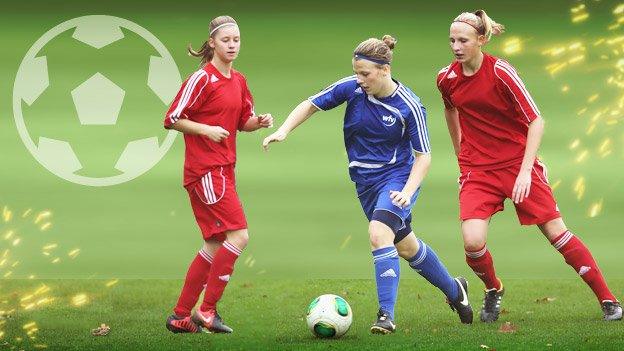What happens to Middlesbrough's football pitch over the summer?
- Published
What happens to a football pitch over the summer?
Few people would want to spend their summer watching paint dry and grass grow, but for Tony Bell, it comes with the territory.
As head groundsman at Middlesbrough's Riverside Stadium and the club's training ground at Rockliffe Hall, he is the man responsible for ensuring Boro have a pristine pitch to run out on.
And, with the club kicking-off their return to the Premier League at home to Stoke City on Saturday, there is much more to it than just cutting the grass a few times a week.
"There is a massive science to it and we are learning all the time," said Bell.
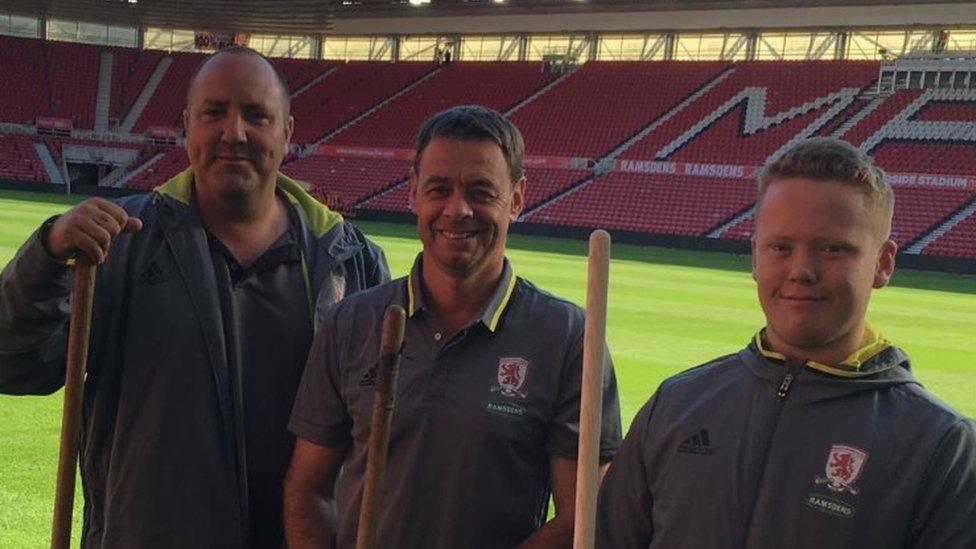
Tony Bell (centre) and his team at the Riverside Stadium preparing the pitch for Saturday's game
His is the sort of work that when done well garners little attention. But when an error is made and a divot diverts the ball in an unexpected and costly direction, his efforts are put in the spotlight.
"I don't think many people appreciate the effort that goes into the pitch, which is fine," he said. "To 99% of them it's just grass, but the club realise the importance of it."
The pitch's summer overhaul begins a week after the end of the season, in this case after Boro's 1-1 draw against Brighton in May which saw them promoted to the Premier League.
It would start sooner but the pitch is available for hire to those keen to play a game on the Riverside turf.
About 15mm is skimmed off the top of the surface, removing all the grass and leaving a four inch-deep brown field in the middle of the 34,742-seater stadium.
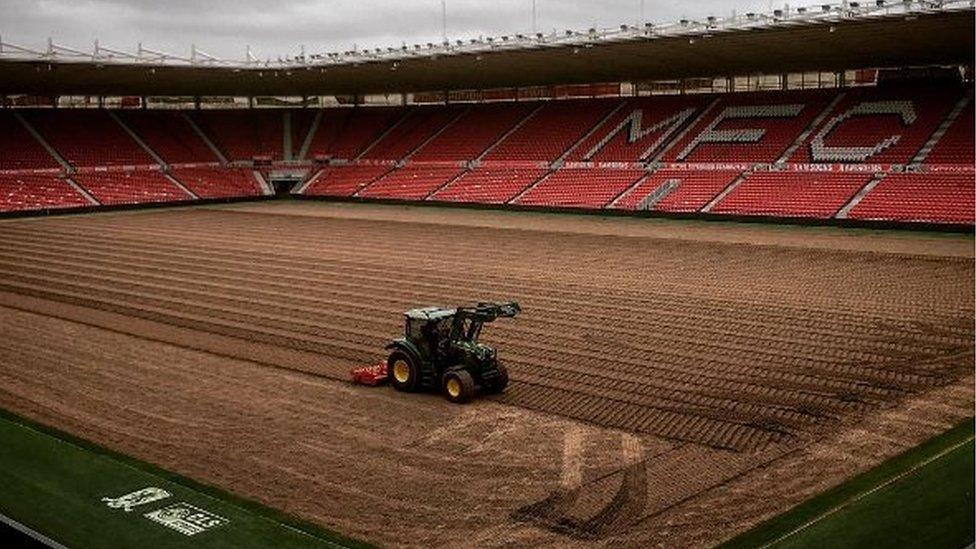
The pitch becomes a field for several weeks
Then 240 tonnes of fibre rootzone is spread across the soil.
This consists of 80% sand, 20% soil and a small but crucial amount of a horse-hair-like fibre which binds the grass to the ground.
"This is probably the hardest part because the mixture needs to be kept damp as it is applied," said Bell, who has been head groundsman since 2002.
"If it is a sunny day we are cursing our luck, we prefer a bit of rain. Otherwise we have to follow the tractor around with a hose or try and use the pitch-side sprinklers.
"And it needs to mix with all the soil beneath it. It is a big job."
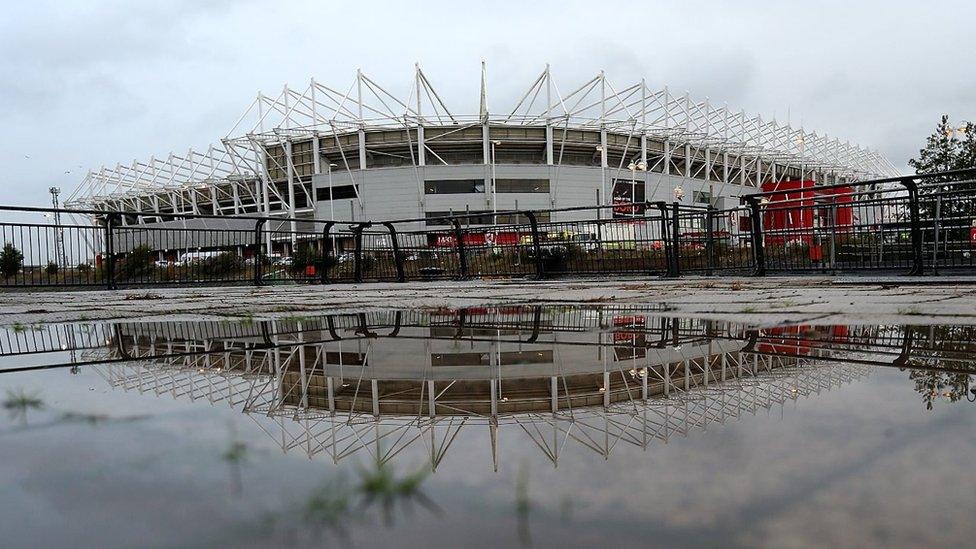
Middlesbrough have played at the Riverside Stadium since 1995
Special stone-raking machines are used to combine the new mixture with the existing soil, then it is rolled multiple times to make it as flat and level as possible - any mistakes at this point will remain for the whole season.
About 25 20kg bags of grass seed are then spread. For the next 10 days or so the entire pitch area will be covered in large germination sheets to keep the moisture in and prevent birds from devouring the seed.
"Pigeons are an absolute nightmare for us," Bell said.
The seed turns into a green haze and finally full blades of grass which, once at length, are cut once a day for the rest of the summer.
The mowers are hand-pushed and to cut the entire 8,214-sq-m surface equates to an eight-mile, four-hour walk.
It is at this point that the pattern emerges on the pitch, the affect created simply by the direction the mower and roller are pushed.

Alvaro Negredo is one of nine signings made by Middlesbrough
Boro's pattern, which is the choice of Bell and has been for the entirety of his time at the club, consists of 600 12ft-wide squares.
"It looks pretty but it also serves a very practical purpose," said Bell.
"It fits our equipment perfectly, the mowers, the lighting rigs, everything. You can use it as a guide without the need to measure distances all the time.
"I think the players also appreciate it. They're probably not at all interested in it but if we were to suddenly have diamond patterning they would notice that and it would not feel like their home pitch anymore. The last thing I would want to do is anything which affects their game. We do not want the pitch to seem alien to them.
"Also, it does look great."
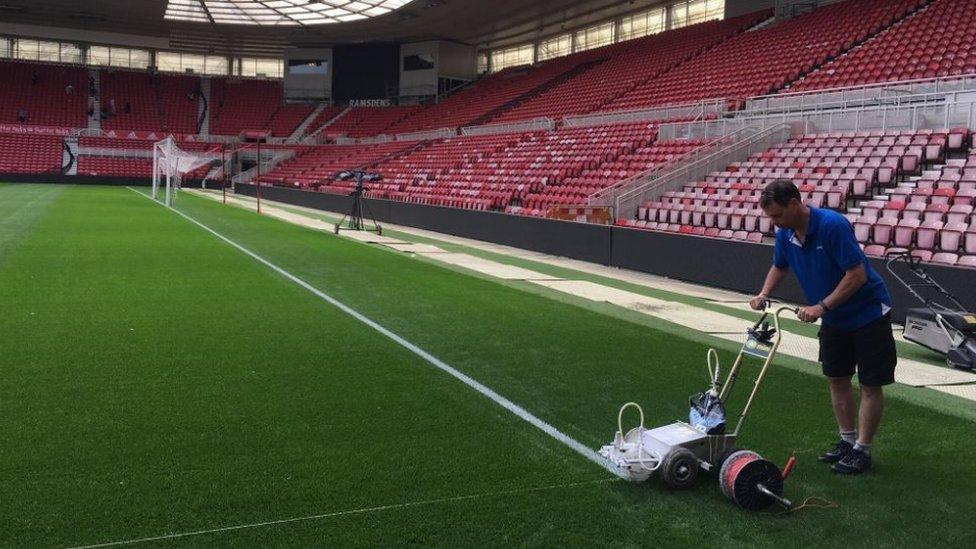
The lines are all mapped out by hand and then painted with a hand-pushed machine
Keeping the players happy is an interesting point.
Bell and his three-strong team spend the week preparing a perfect pitch for the players to go and ruin. Surely that is annoying?
"It's just the job," he added.
"We have jobs because of the players, the pitch is there for them to play football on, we just accept that. That being said, when someone scores and then slides across the turf you do think 'I wish they hadn't done that'."
The final week of pre-season sees the white lines painted, a meticulous process involving hand-pushed paint machines following perfectly laid-out pieces of string.
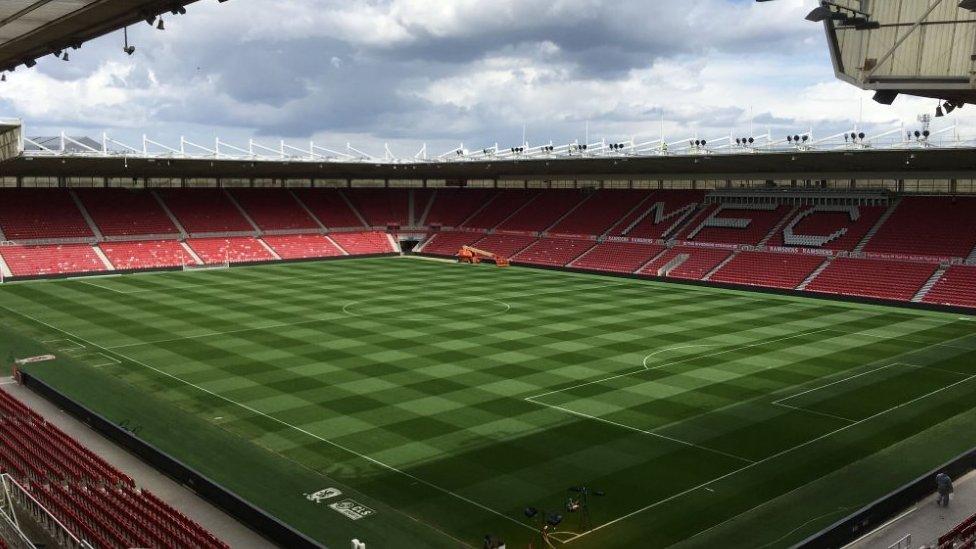
The pitch's pattern is decided by Tony Bell and is both pretty and practical
The rest of the 21-year-old stadium has also seen a redevelopment, external to meet the standards required by the Premier League, a division Boro last played in in 2009.
More media space has been created, new television studios built and improved floodlights installed.
And, of course, there have also been investments in the squad, with nine new arrivals including former Barcelona goalkeeper Victor Valdes and ex-Manchester City striker Alvaro Negredo.
For Bell and his team, however, it's the pitch that has occupied their summer.
"We want it to be perfect, it has to be right, it's worth all the effort though," he said.
- Attribution
- Published25 May 2015
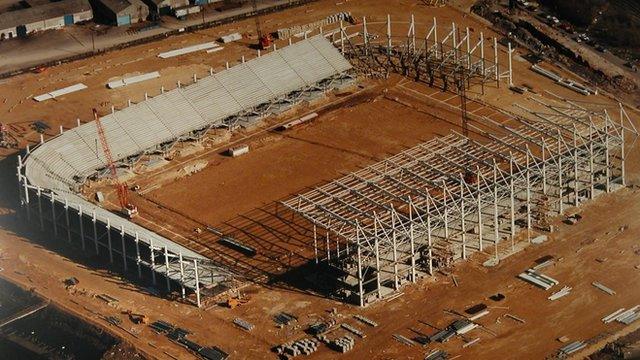
- Published7 May 2016
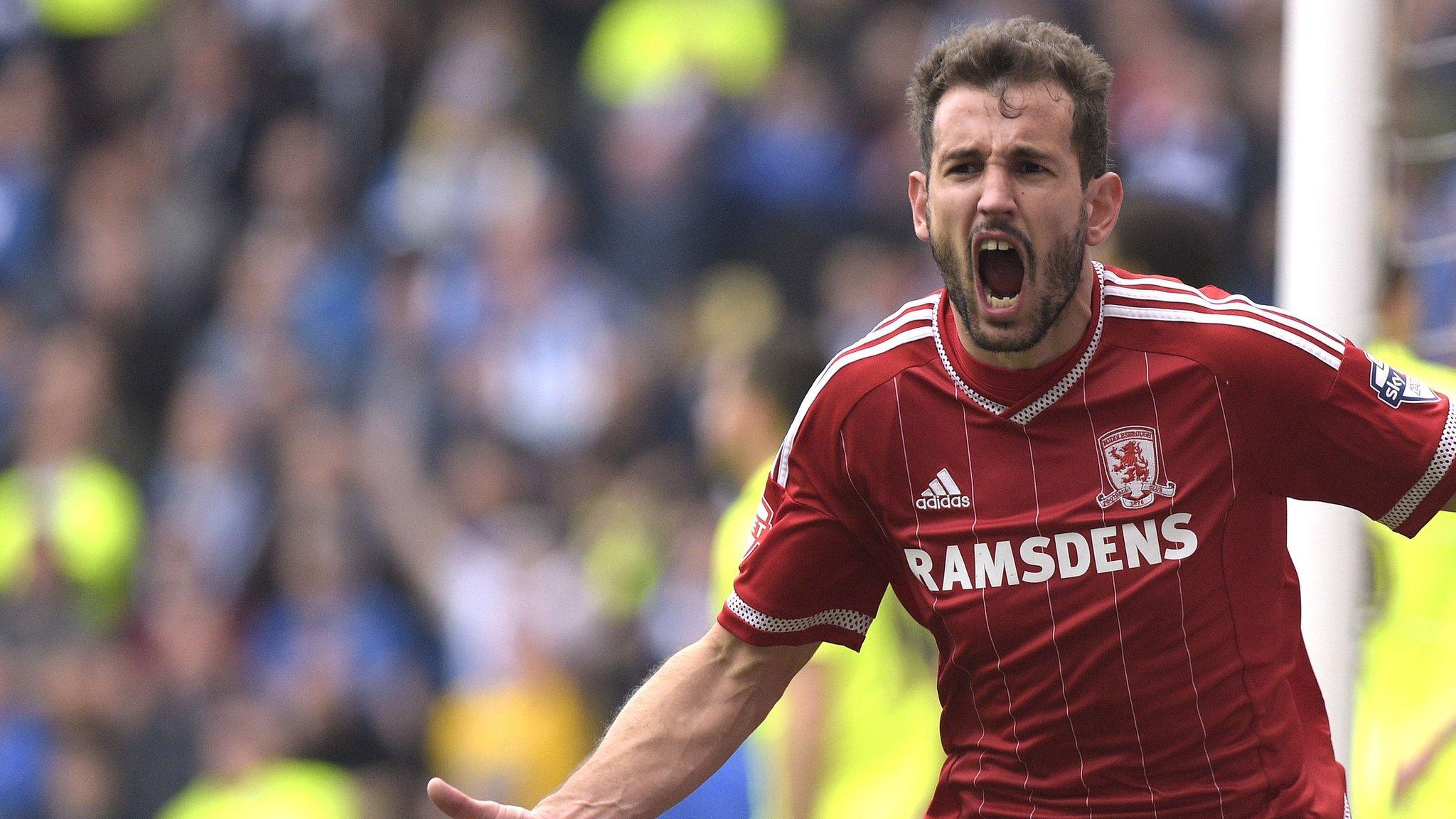
- Published14 January 2018
- Published7 June 2019
